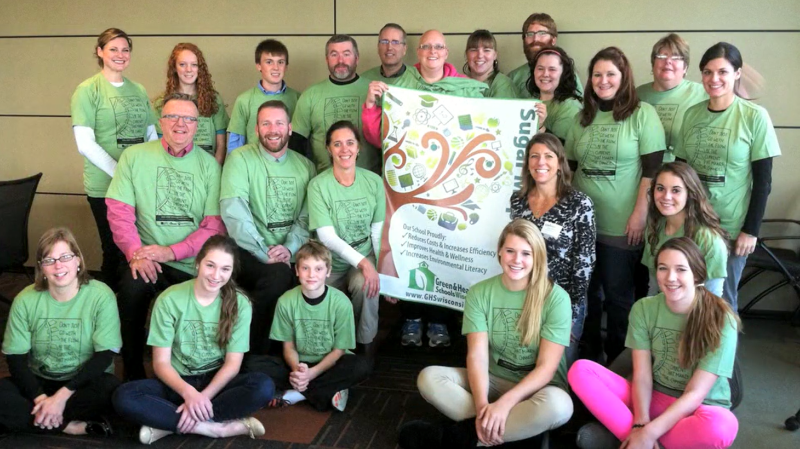
<iframe src="https://player.vimeo.com/video/130741463" width="640" height="360" frameborder="0" webkitallowfullscreen mozallowfullscreen allowfullscreen></iframe><!-- [et_pb_line_break_holder] --><p><a href="https://vimeo.com/130741463">Green & Healthy Schools Wisconsin</a> from <a href="https://vimeo.com/donfilm">Don Ford</a> on <a href="https://vimeo.com">Vimeo</a>.</p>
The Natural Resources Foundation is a proud supporter of Green & Healthy Schools Wisconsin, a program that empowers, supports and recognizes schools for nurturing healthy kids and sustainable communities. Schools that participate are recognized for their commitments to sustainability, and see benefits including reducing environmental impacts and costs, improving health and wellness, and increasing environmental and sustainability literacy.
One of the first of its kind, this program is administered through a partnership between the Department of Natural Resources, the Department of Public Instruction, and the Wisconsin Center for Environmental Education, and is supported by the Wisconsin Sustainable Schools Coalition (WSSC)_. A member of this coalition, NRF has provided capacity building support for Green & Healthy Schools and funded its programs and initiatives, including providing school districts with information and tools to become more environmentally friendly.
Schools are eligible for recognition in the Green & Healthy Schools Wisconsin program if they are actively reducing environmental impact and costs, improving the wellness of staff and students, and increasing environmental literacy, according to the Department of Public Instruction’s environmental education consultant Victoria Rydberg. Green & Healthy Schools recognizes “green schools” at different levels (Sprout, Seedling, Sapling, and Sugar Maple), depending on requirements met and achievements made by the school. The program focuses on nine areas:
- Community involvement
- Energy
- Environmental and sustainability education
- Environmental health (indoor air quality, chemical management, integrated pest management)
- Health and wellness
- Recycling and waste management
- School site
- Transportation
- Water
- A healthier, safer learning environment
- An increased sense of ownership by teachers, students, and staff in the school
- Economic savings associated with reduced consumption and operating costs
- Increased protection of natural resources
- Increased connections between the community and the school
- Use of the school site and facilities as a teaching tool
